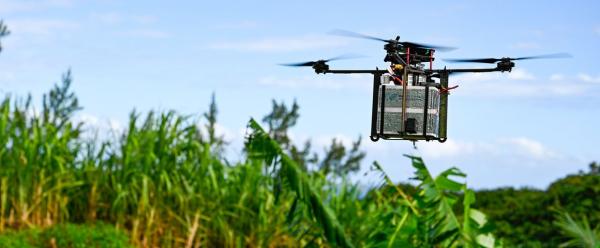Results & impact 10 October 2025
- Home
- Press area
- Press releases
- Diversification to help forests adapt to extreme drought
Species diversification to help forests adapt to extreme drought

Young plants in a forest tree nursery set up under the "Ai ba Futuru - Trees for the Future" agroforestry project in Timor-Leste.© A. Rival, CIRAD
Our forests supply numerous ecosystem services and are the planet’s primary land-based carbon sinks. This important resource is coming under increasing pressure from climate change, as repeated heat waves and droughts stunt the trees’ growth and may lead to early death. While there is currently much interest in increasing species diversity to improve forest resilience, we still know very little about the effects of mixed planting on the likelihood of damage caused to trees by droughts and extreme heat events.
A consortium of international scientists, in which INRAE and Cirad are key players, has been working on a variety of studies across Europe that aim to improve our understanding of the ways that forest species diversification can help trees to increase their resilience to climate change.
To assess the benefits of species diversification, the scientists have made use of an international network of field tree experimental projects, covering over twenty species of tree (maple, birch, beech, etc.) across 5 experimental sites in France, Germany, Belgium, Italy and Austria. In-field measures and sampling were largely carried out during the extreme drought events of 2022.
By combining physiological measurements of water stress (assessed on the ground at the peak of the drought) and data on the trees’ resistance to stress (measured in the laboratory using branch samples), the scientists were able to calculate the mortality risk for each tree under drought conditions.
Their results show that it is a tree’s identity, particularly its species, that is the main factor in determining its mortality risk during extreme drought, outweighing whether it is growing in a mixed stand or monoculture. For example, on the ORPHEE experimental site in the Gironde, part of the French Landes, the scientists observed that Quercus ilex, the evergreen oak, is more resistant to such extreme droughts than birch or pine, whether it is growing in mixed stands or monocultures.
This is not to say that the resistance associated with the intrinsic characteristics of each species negates the positive overall effect of mixed planting on tree survival – the latter is a benefit already demonstrated for young saplings in a previous study by the same scientific consortium.[1]
Indeed, particular species combinations can have strongly positive effects on forest survival, for example, the combination of evergreen oak with pine, evergreen oak with birch, maple with birch, or larch with oak. The consortium scientists calculate that a good choice of species combinations by forest managers could drastically reduce the risk of drought-mortality in their trees – by between 100 and 200%. On the French experimental site, closer planting of pine with evergreen oak allowed the oak trees to benefit from greater shade, for example, and to be more resistant to periods of extreme heat.
The detailed analysis of particular combinations also allowed the teams to demonstrate that the mixed planting of species using different water consumption strategies (such as oaks and pines) can increase the drought resistance of mixed forests.
This work is providing the keys to unlock an improved understanding of the drought-resistant mechanisms of trees. The knowledge it generates should be used to help establish forms of forest management that are adapted to climate change, and to develop practical predictive tools for the adaptation of forests to extreme drought.
[1] Blondeel H., Guillemot J., Martin-St Paul N. et al. (2024). Tree diversity reduces variability in sapling survival under drought. Journal of Ecology, 112(5), 1164–80. https://doi.org/10.1111/1365-2745.14294
Reference
Decarsin R., Guillemot J., le Maire G. et al. (2024). Tree drought-mortality risk depends more on intrinsic species resistance than on stand species diversity. Global Change Biology - https://doi.org/10.1111/gcb.17503



























